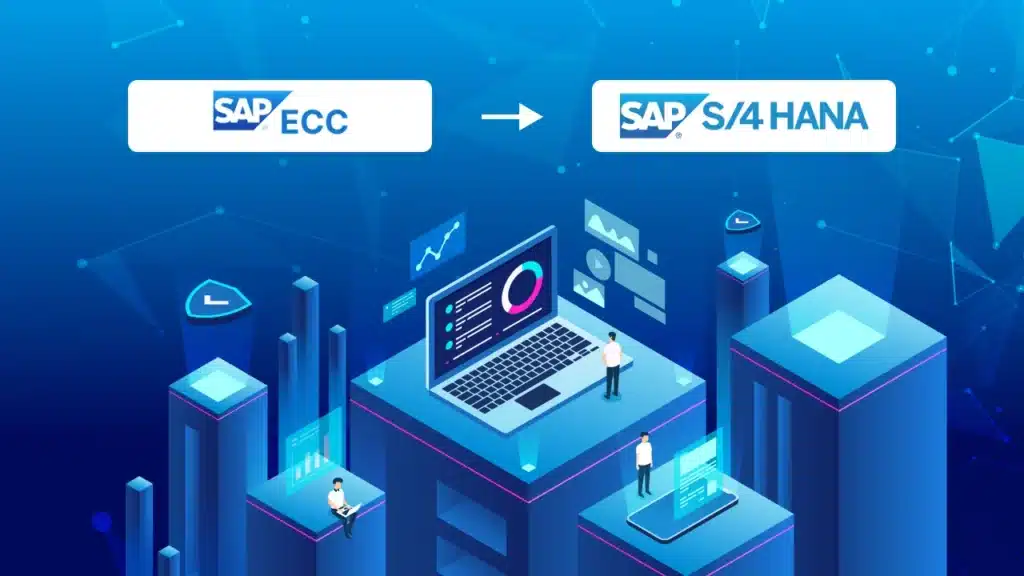
As the world of SAP has undergone a significant transformation, moving from the legacy ECC era to the dynamic S/4HANA landscape, SAP AMS has not remained stagnant. Instead, it has evolved alongside the changing landscape, adapting to the demands of modern organizations and playing an increasingly strategic role in their digital transformation journeys.
In the early days, SAP AMS was something of a maintenance superhero, fixing bugs, supporting routines and performing system updates. It was about making sure SAP applications ran smoothly, but it was more of a “fix it when it breaks” kind of thing.
Today, SAP AMS has become a real team player. It is no longer just about fixing things, but has become a strategic partner in the business game. The focus has shifted from routine tasks to working with the larger goals of the organization.
So why is SAP AMS continuing to evolve? Well, that’s no coincidence. It’s because of technology, changing business needs and the way the digital world is constantly changing. Let’s take a look at why SAP AMS is changing and adapting in this digital world.
The Driving Forces: Key Factors in the Evolution of SAP AMS
1. Technological Advancements: Rapid advancements in technology, such as cloud computing, artificial intelligence, and automation, are reshaping the IT landscape. SAP AMS evolves to leverage these technologies for more efficient and effective management of SAP applications.
2. SAP S/4HANA Adoption: The push toward SAP S/4HANA, SAP’s next-generation ERP suite, is a major catalyst for change. Organizations transitioning to S/4HANA require updated AMS services that align with the new platform’s capabilities and features.
3. Cloud Computing Trends: The increasing adoption of cloud computing is transforming how businesses approach SAP applications. Cloud-based AMS solutions offer scalability, flexibility, and cost-effectiveness, prompting the evolution of SAP AMS to adapt to this cloud-centric paradigm.
4. Data Analytics and AI Integration: The integration of data analytics, artificial intelligence, and automation within SAP AMS processes is enhancing incident management, monitoring, and overall efficiency. This evolution allows for more proactive and data-driven approaches to application management.
5. Focus on Business Outcomes: There’s a shifting emphasis from purely technical maintenance to aligning AMS services with broader business objectives. SAP AMS is evolving to contribute to strategic planning, aligning with organizational goals, and delivering tangible business outcomes.
6. Proactive Incident Management: There is a noticeable shift toward proactive incident management. Advanced monitoring tools and analytics are being leveraged to identify and address issues before they impact operations, reducing downtime and disruptions.
7. Holistic Support Models: Integrated support models covering both technical and functional aspects of SAP applications are gaining popularity. This holistic approach ensures a comprehensive solution that addresses the diverse needs of organizations.
8. User Experience Prioritization: Recognizing the importance of user experience, SAP AMS is placing a greater focus on user-centric design and accessibility. This evolution contributes to increased productivity and end-user satisfaction.
9. Security and Compliance Demands: With the growing threat landscape, security and compliance have become paramount concerns. SAP AMS is evolving to incorporate robust cybersecurity measures and ensure adherence to industry regulations.
10. Customization and Flexibility Requirements: Organizations increasingly demand more customization and flexibility in SAP AMS solutions. Service providers are adapting their offerings to accommodate unique business requirements, providing tailored solutions that align with specific needs and objectives.
11. Collaborative Partnerships: The relationship between organizations and AMS providers is evolving into more collaborative partnerships. SAP AMS providers are seen as strategic advisors, actively participating in organizational decision-making and contributing to long-term planning.
12. Hybrid IT Environments: The prevalence of hybrid IT environments, combining on-premises and cloud solutions, requires SAP AMS to adapt and support seamless integration and management across different platforms.
Also Read: Smooth SAP S/4 HANA Migration: A Step-by-Step Guide
In Conclusion
As SAP continues to evolve, SAP AMS will play an increasingly crucial role in helping organizations optimize their SAP investments, enhance efficiency, and achieve their business objectives. Organizations that embrace SAP AMS as a strategic partner will be well-positioned to navigate the digital transformation journey successfully, reaping the benefits of a seamless, efficient, and data-driven SAP environment.














